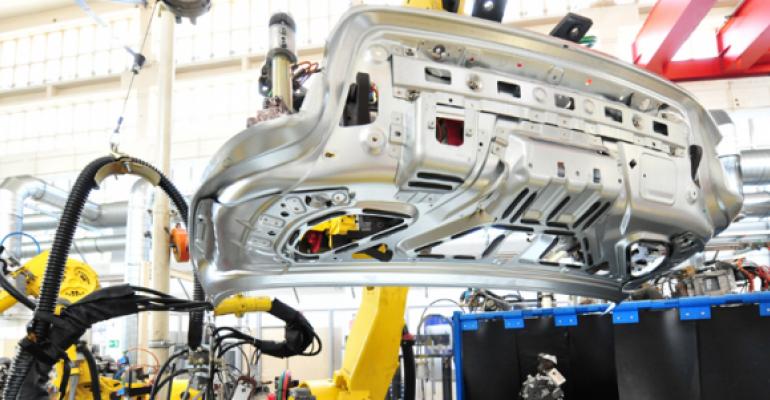Gestamp, a Spanish multinational specializing in metal vehicle components, is researching ways to make lighter and safer cars after acquiring funding from the European Investment Bank.
“The project activities aim at further reducing vehicle weight (and) improving vehicle safety, while enhancing manufacturing productivity and reducing average production cost,” a Gestamp spokesperson tells WardsAuto.
The EIB the not-for-profit lending arm of the European Union, is loaning Gestamp €160 million ($176 million) following the July 14 signing of the loan by EIB Vice President Román Escolano and Gestamp CEO Francisco Riberas.
Welcoming the loan from the EIB’s Investment Plan for Europe economic-development financing program, the bank says the money “will allow Gestamp to implement a new 4-year research program at its European sites.”
Headquartered in Madrid, Gestamp’s operations in Spain will receive €41.6 million ($45.7 million) of the loan, while the rest will fund research at company facilities in Germany, Sweden, the U.K. and France.
The loan will fund R&D related to automotive mechanisms, body-in-white and chassis, which Gestamp supplies to OEMs. Given the broad range of technologies involved in automotive metal-parts forming and assembling, the R&D activities will cover a wide variety of techniques and processes, the Gestamp spokesperson says.
This includes components and processes design, simulation, testing and validation in different applications such as stamping (cold, hot and high-strength steel); hydroforming; roll forming; welding, joining/assembling; press machine and tool manufacturing; machining; laser cutting; molding; and die casting.
The research could offer key advantages in sustainability, the Gestamp spokesperson says. “Weight reductions of those components play a non-negligible role in the OEMs’ ambitions to reduce fuel consumption and CO2 emissions in order to meet increasingly stringent environmental targets.
“For example, in the case of chassis products that usually represent around 440 lbs. (200 kg) of a 3,300-lb. (1,500-kg) vehicle, weight reduction of 10%-15% (44 lbs.-66 lbs. [20kg-30 kg]) can be achieved; this translates into an estimated fuel consumption reduction of 1.0%-1.5% and an equivalent impact on CO2 emissions,” the spokesperson says.
Additionally, the increased safety characteristics of the newly developed automotive parts will help reduce the number of road accident injuries and fatalities, “subsequently adding up to social sustainability and quality of life in Europe.”
Materials Research Complements Production Processes
Gestamp also is looking into developing new materials such as high-strength steel, aluminum and composites such as carbon fiber, optimized plastics and sandwich sheets.
“As there is no single material answer for the future applications but rather a mix of several material and assembly technologies, it makes the development process even more sophisticated,” the Gestamp spokesperson says.
“Obviously, the development of such elaborate and complex materials and technologies require appropriate tools and resources in order to ensure a high level of competencies, efficiency and quality within the shortest time.”
Given Gestamp’s close collaboration with customers and suppliers, the EIB expects the technologies and materials generated by the research to be spread across the European auto-manufacturing sector, stimulating further R&D and innovation, according to project documents.
“The project will be managed and carried out by (Gestamp’s) existing R&D staff in various European countries,” the company says.
While the project consists mainly of operational expenditures, it also includes the reconstruction of the testing facility on the existing site of Gestamp’s R&D center in Lulea in northern Sweden. “Investing in new technologies means investing in the future. This project will help the (EU) maintain its leading position in automotive innovation,” Escolano says in a statement.
The EIB also hopes the loan will help create employment opportunities. “Gestamp has 95 factories in 20 countries with more than 33,000 employees, of which 1,300 work in research, development and innovation. This investment will make it possible for the company to continue creating high-quality jobs in Europe, as (R&D) is a powerful growth driver,” the EIB says in a statement.
Gestamp reported €7 billion ($7.7 billion) in net sales in 2015.
With the loan, Riberas says, the company will redouble its R&D efforts to help it stand out from the competition. “The fact that the investment is concentrated on Europe will make it possible to safeguard our greatest asset: researching and developing the cars of the future on our home continent.”





